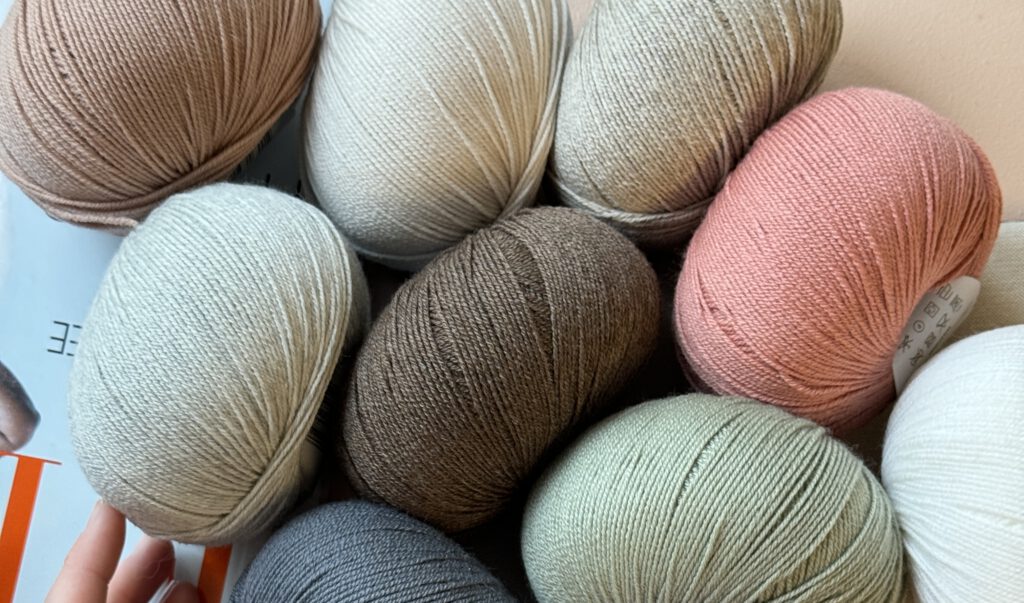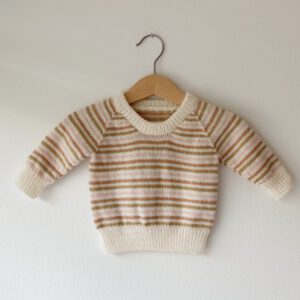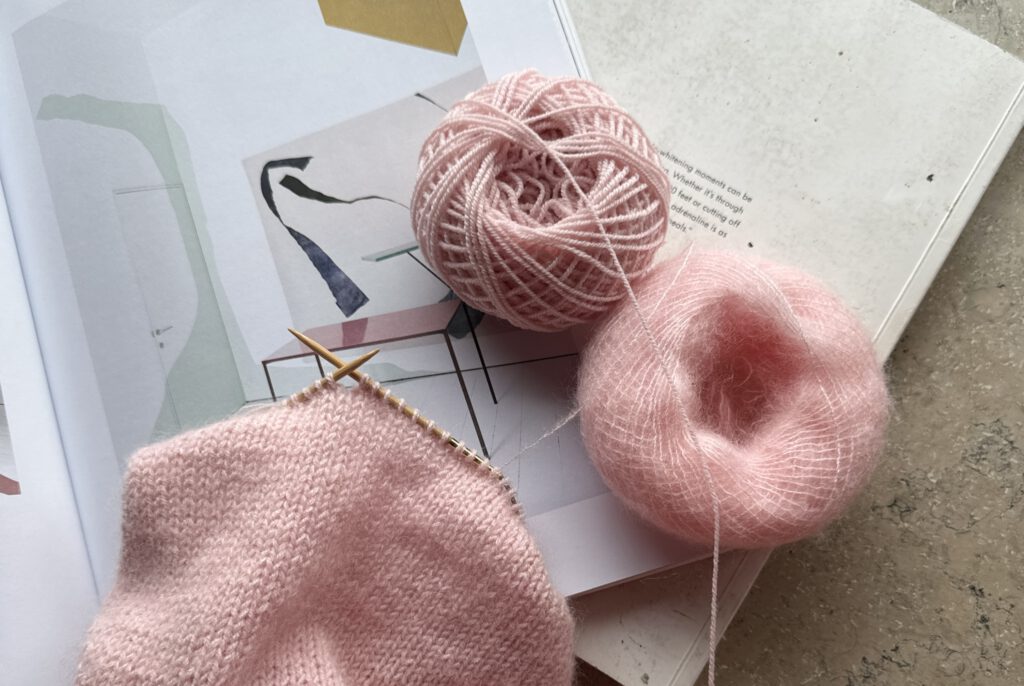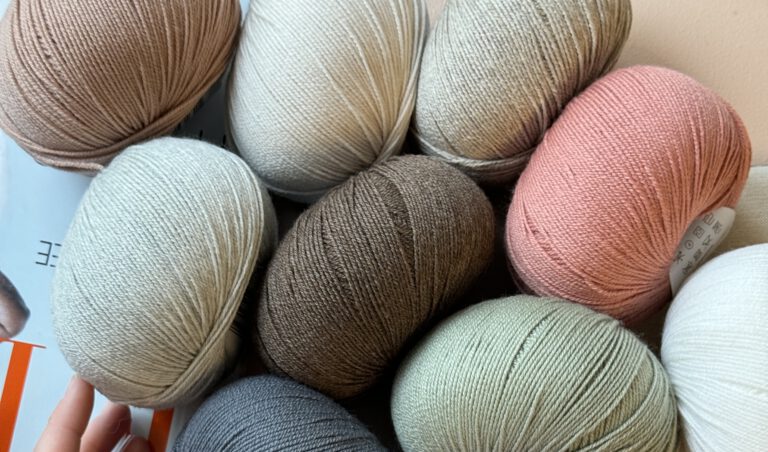What is fingering weight yarn?
Fingering weight yarn is a light, thin yarn that’s often used for projects that require fine detail or a soft, delicate fabric. It is a versatile yarn to reach for because you can make pretty much anything with it. However, it is most commonly used for socks, lightweight sweaters, shawls, and baby clothes. On top of that, you can also hold it double, to create a thicker yarn, or hold it alongside another yarn like a mohair to give it a little extra weight and texture.

How to tell if it’s fingering weight yarn
There are a few ways you can figure out if your yarn is fingering weight. But first, let’s talk about yarn weight definitions. Yarn weight is really more of an art than a science. There is a range that would fall into the category of what most people would consider fingering weight yarn. Different yarn companies, crafters, and countries have varying ideas of what exactly fall into this category of yarn.
Another thing to think about when figuring out if yarn is fingering weight, is that not all yarn is labelled the same way. So, you might have to use a few different strategies to figure out what weight of yarn you are looking at. This will all depend on the information that the yarn label gives you.
What gauge is fingering yarn?
Gauge is commonly used in knitting to ensure that the tension and yarn being used by two different knitters are reasonably similar. This way, they can expect the same dimensions for a finished project. It is also used as a basis to determine the weight of yarn. Gauge measures the number of stitches that appear within 4 inches or 10cm of stockinette stitch. For fingering weight yarn, this is typically between 27-32 stitches. This will sometimes be written as 28/10, for example, meaning 28 stitches over 10cm of knitting.
What weight is fingering yarn?
Most yarn labels give measurements of the weight and length of the yarn. You can use this information to pinpoint whether or not the yarn is fingering weight. It helps to use a standard weight and just look at the length. Usually per 100g or 3.5oz, it will be 400-525 meters or 437-574 yards. It is easy to calculate even if the yarn is not 100g. For example, if you have a 50g ball of yarn, simply times the length by 2 to see how it compares to these ranges.
What number is fingering weight yarn?
The Craft Yarn Council has developed a standard yarn weight system to help crafters more easily identify yarn weights. Using their system, fingering weight yarn is identified as 1, super fine.

Needles
The needles that you decide to use with fingering weight yarn depends on lots of factors. First, what needles do the pattern that you are following recommend. Even the recommended needle size might not be the one you use. You will want to ensure that your gauge matches that of the designer. It could also depend on what type of fabric density you are trying to create. If you’d like a very loose fabric that is breathable, and a bit “holey,” then you should probably go for larger needles. However, the recommended size of needle to use with fingering weight yarn to achieve a relatively dense fabric would be 2.5mm to 3.5mm or US 1 to US 4.
Best Projects for Fingering Weight Yarn
As I mentioned in the introduction, this is a very versatile yarn to keep in your stash. Here are some great projects that you can make with fingering weight yarn.
Socks
This yarn weight is very often used for making socks. So much so that some fingering weight yarns are dubbed “sock yarn.” This is especially true if they have nylon in the fiber content. This yarn is great for socks because it is fine enough to fit into shoes without adding too much bulk, but not so fine that they take forever to finish.
Shawls
Shawls are also a great option for making with fingering weight yarn. Because you often want your shawl to be drapey and have fine details, the thinness of this yarn makes it ideal for shawls. It can effectively display both beautiful, intricate lace patterns, but can still show the lovely texture of cables.
Baby Clothes
Although you might hesitate to use fingering weight yarn for adult size sweaters, this doesn’t need to be the case for baby clothes. The yarn might be thinner, but the clothes are also smaller! It won’t take long to finish, and you get the refined look of a thinner yarn.

Lace Patterns
When you hear lace patterns, you might think that they have to be knit with lace weight yarn. However, fingering weight yarn offers the right amount of delicate touch required for lace designs, without having to work with really fine yarn.
Substitutes and Adjustments
You can use fingering weight yarn as a substitute for thicker yarn, and you can also use thinner yarn as a substitute for fingering weight yarn. When substituting for a thicker yarn, there are a few options. You can hold it double to achieve a worsted weight yarn. You can also hold it with a lace weight yarn to achieve at DK weight yarn. If you want to substitute some thinner yarn for fingering weight, your main option is to hold thin lace weight yarn double.

If you want to adjust a pattern to use fingering weight yarn without substituting yarn to reach the original pattern’s yarn weight, you can try to adjust the pattern to fit. This would typically happen if you are knitting a pattern for a heavier weight yarn. For an approximation, you would want to knit a larger size in the pattern, using your thinner yarn and thinner needles. However, doing this is always risky, because you can’t be sure how the size will turn out.
Conclusion
I hope this was a useful overview of fingering weight yarn, how to identify it, the best uses for it and possibilities to make substitutions. This is a commonly found yarn in yarn shops, and most yarn producers have at least one option in this category. It is versatile to knit with and there are many patterns, especially socks and shawls, that call for this weight of yarn. We hope you have fun knitting your next project with fingering weight yarn.




